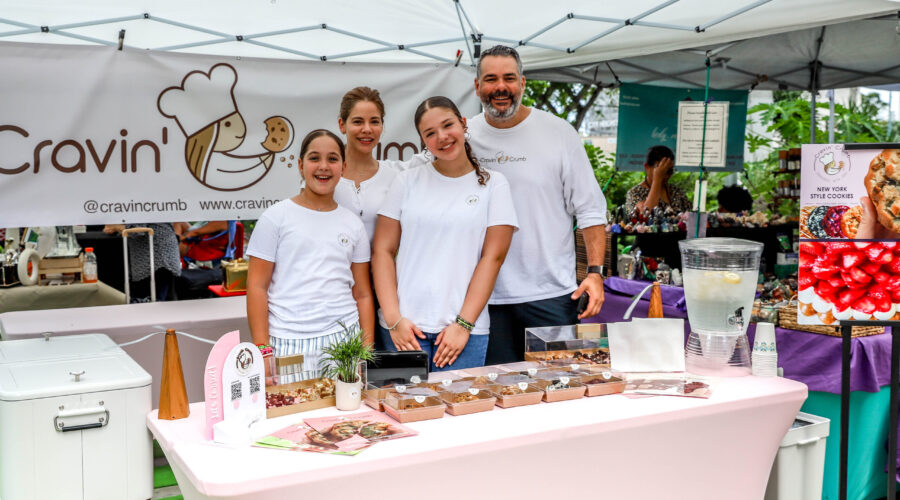Why Every Venue Needs a Professional Vendor Management Strategy
Introduction
Whether you operate a bustling community farmers market, an upscale food truck festival, or a seasonal artisan fair, the quality of your vendors directly impacts attendee satisfaction, revenue performance, and your venue’s reputation. A professional vendor management strategy transforms ad hoc booking into a streamlined, scalable system—reducing no-shows, ensuring compliance, and fostering strong long-term partnerships. In this in-depth guide, we’ll explore:
- What is vendor management?
- Key benefits for venues
- Core components of a robust vendor management program
- Metrics and KPIs to track success
- Real-world case study: how Unite Worldwide, Inc. transformed a market
- Step-by-step checklist to launch your strategy
By the end, you’ll understand why every venue—no matter its size or scope—must invest in professional vendor management to thrive in today’s competitive event landscape.
1. What Is Vendor Management?
Vendor management encompasses all processes related to sourcing, contracting, onboarding, coordinating, and evaluating vendors who provide goods or services at your venue. Unlike simple vendor lists, a professional strategy includes:
- Recruitment & Outreach: Identifying and attracting the right mix of vendors.
- Application & Selection: Standardized criteria and a centralized portal for submissions.
- Contracting & Compliance: Clear agreements, insurance verification, and permit checks.
- On-Site Coordination: Logistics planning, setup/teardown schedules, and staff assignments.
- Performance Monitoring: Sales tracking, customer feedback, and post-event debriefs.
- Relationship Building: Ongoing communication, referrals, and loyalty incentives.
When thoughtfully executed, vendor management reduces last-minute chaos and elevates both vendor satisfaction and visitor experience.
2. Key Benefits for Venues
A. Reduced No-Show & Drop-Out Rates
By vetting vendors, confirming permits, and collecting deposits through an automated system, venues see up to a 75% reduction in no-shows .
B. Consistent Quality & Compliance
Standardized onboarding ensures every vendor meets health, safety, and legal requirements—minimizing liability and safeguarding your venue. For food vendors, this includes Florida Department of Health approvals and mobile unit permits .
C. Enhanced Attendee Experience
A curated vendor lineup—balanced between food, crafts, and entertainment—keeps guests engaged longer, boosting on-site spending and positive word-of-mouth.
D. Data-Driven Decision Making
Central dashboards track sales, peak hours, and vendor performance, enabling you to optimize layouts, tailor marketing, and negotiate better contracts.
E. Strong Vendor Relationships
Transparent communication, timely payments, and feedback loops turn vendors into ambassadors for your venue, leading to referrals and priority bookings.
3. Core Components of a Robust Vendor Management Program
A. Centralized Vendor Portal
A single online portal where vendors apply, upload permits, pay fees, and receive updates cuts administrative load by 50% . Features should include:
- Secure document uploads (licenses, insurance certificates)
- Automated reminders for renewals
- Integrated payment processing
Internal Link: Learn more about our Vendor Directory & Portal.
B. Standardized Application & Selection Criteria
Define clear requirements—product categories, quality standards, financial stability—and use scoring rubrics to ensure fair selection. Host periodic “open booths” to discover emerging talent.
C. Clear Contracting & Compliance Checks
Every vendor contract should specify:
- Scope of services/products
- Fee structure and payment schedule
- Cancellation/refund and force-majeure clauses
- Insurance and permit obligations
Internal Link: Download our Compliance Checklist for Venues.
D. Pre-Event Logistics Planning
Assign staff to walkthrough layouts, confirm load-in/load-out timings, and map utilities (power, water). Use floor-plan software to optimize booth placements based on expected foot traffic.
E. On-Site Coordination & Support
Provide a staffed vendor services desk, wristbands, vendor badges, and an emergency communication protocol. Rapidly address issues—food safety concerns, equipment failures, or no-show gaps—to maintain seamless operations.
F. Post-Event Performance Analysis
Collect vendor sales data, guest feedback surveys, and internal debriefs. Track metrics like average sales per booth, uptime percentages, and net promoter scores (NPS) to refine future selections and layouts.
Internal Link: Access our Post-Event Analytics Dashboard.
4. Metrics & KPIs to Track Success
| Metric | Why It Matters |
|---|---|
| Vendor Attendance Rate | Indicates reliability of recruitment |
| Avg. Sales per Vendor | Measures vendor profitability and mix quality |
| Attendee Dwell Time | Correlates with on-site spending |
| Permit Compliance Rate | Reveals legal/safety adherence |
| NPS (Net Promoter Score) | Gauges overall satisfaction |
| Repeat Vendor Booking Rate | Reflects vendor relationship health |
Regularly review these KPIs to identify strengths, weaknesses, and opportunities for continuous improvement.
5. Case Study: Transforming Grove Market with Unite Worldwide
Background: A mid-sized community park hosts a seasonal farmers market plagued by inconsistent vendor turnout and customer complaints about crowded layouts.
Solution: Unite Worldwide, Inc. implemented a full vendor management overhaul:
- Central Portal Launch: Migrated applications to a secure online system.
- Curated Vendor Mix: Introduced balanced categories—50% food, 30% artisans, 20% interactive demos.
- Automated Compliance Checks: Integrated permit and insurance verification workflows.
- Real-Time Analytics: Deployed sales and traffic heatmaps for on-the-fly layout adjustments.
Results Over One Season:
- Vendor no-show rate dropped from 20% to 5%.
- Average vendor sales increased by 25%.
- Attendee NPS rose from 45 to 72.
- Market footprint expanded by 15% with minimal additional staffing.
6. Step-by-Step Checklist to Launch Your Strategy
- Define Objectives: Clarify goals—higher sales, safer operations, stronger vendor relations.
- Select Technology: Choose a vendor portal with document management and payment integration.
- Draft Standard Contracts: Collaborate with legal to create modular agreements for all vendor types.
- Recruit & Onboard: Launch multi-channel outreach and begin application intake.
- Train Staff: Educate your team on compliance requirements and day-of coordination protocols.
- Run a Pilot Market: Test the process at a smaller event, collect feedback, and iterate.
- Scale & Optimize: Roll out to all events, refine based on KPI tracking and stakeholder input.
Internal Link: Download our full Vendor Management Implementation Guide.
Conclusion
A professional vendor management strategy is the cornerstone of a successful, scalable event operation. By centralizing applications, standardizing compliance, optimizing logistics, and leveraging data, venues unlock higher revenue, happier vendors, and delighted guests. Whether you manage weekly farmers markets or annual festivals, investing in vendor management pays dividends in efficiency, safety, and community trust.
🚀 Ready to elevate your vendor management?
- Explore our Vendor Management Services
- See venue solutions at Unite Worldwide Venue Services
- Access toolkits in our Vendor Resource Library
- Join our network via Vendor Community Sign-Up


